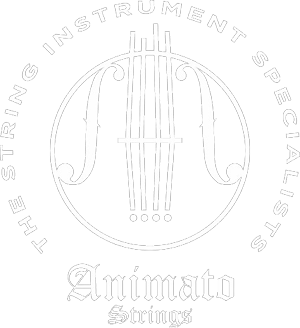Early Life and Musical Beginnings
Astor Pantaleón Piazzolla was born on March 11, 1921, in Mar del Plata, Argentina. His musical journey began at an early age when his family moved to New York City in 1925. It was in the multicultural melting pot of New York that young Astor was first exposed to a diverse range of musical styles, from jazz to classical music.
In 1929, Piazzolla’s father gifted him a bandoneon, the instrument that would become synonymous with his name. The young musician quickly developed a passion for this complex instrument, practicing for hours each day. During this time, he also had a chance encounter with Carlos Gardel, the famous tango singer, who offered him a role in his upcoming film. However, Piazzolla’s father deemed him too young for the opportunity.
Return to Argentina and Musical Education
The Piazzolla family returned to Mar del Plata in 1936, where Astor began playing in local tango orchestras. His unique style and innovative approach to the traditional tango were already beginning to emerge. In 1938, he moved to Buenos Aires, the heart of tango music, where he continued to perform and hone his craft.
Recognizing the need to expand his musical knowledge, Piazzolla began studying classical music under Alberto Ginastera in 1941. This formal training in composition would prove crucial in shaping his future musical innovations. During this period, he also formed his own orchestra, which performed at local venues and on radio stations.
The Birth of Nuevo Tango
In 1954, Piazzolla won a scholarship to study in Paris with the renowned composition teacher Nadia Boulanger. This experience would prove transformative for the young musician. Boulanger, recognizing Piazzolla’s unique talent, encouraged him to pursue his own musical voice by combining his tango roots with his classical training.
Returning to Argentina in 1955, Piazzolla formed the Octeto Buenos Aires, marking the birth of Nuevo Tango. This new style incorporated elements of jazz and classical music into the traditional tango framework, featuring extended harmonies, counterpoint, and improvisation.
Famous Works and Collaborations
Throughout his career, Piazzolla composed numerous works that have become classics of the genre. Some of his most famous compositions include:
Adiós Nonino (1959)
Composed as a tribute to his father, this piece is considered one of Piazzolla’s masterpieces. Its emotional depth and innovative structure exemplify the essence of Nuevo Tango.
Libertango (1974)
This iconic composition became an international hit and has been covered by numerous artists across various genres.
Concierto para Quinteto (1971)
A quintessential work that showcases Piazzolla’s ability to blend tango with classical forms.
María de Buenos Aires (1968)
An opera that tells the story of a prostitute in Buenos Aires, further demonstrating Piazzolla’s versatility as a composer.
Piazzolla also collaborated with various musicians and ensembles throughout his career, including:
- The Kronos Quartet
- Gerry Mulligan
- Gary Burton
- Milva
These collaborations helped to spread Nuevo Tango to international audiences and solidify Piazzolla’s reputation as a groundbreaking artist.
Challenges and Controversies
Despite his eventual success, Piazzolla faced significant opposition from tango traditionalists who viewed his innovations as a threat to the genre. He was often criticized and even physically threatened for his unconventional approach to tango music.
However, Piazzolla remained committed to his artistic vision, famously stating, “For me, tango was always for the ear rather than the feet.” This dedication to pushing the boundaries of tango eventually won him recognition both in Argentina and internationally.
Later Years and Legacy
In the 1980s, Piazzolla’s international fame grew significantly. He performed at prestigious venues around the world and received numerous awards and accolades for his contributions to music. Despite health issues in his later years, including a stroke in 1990, Piazzolla continued to compose and perform until shortly before his death on July 4, 1992, in Buenos Aires.
Piazzolla’s legacy extends far beyond the world of tango. His innovative approach to composition and performance has influenced musicians across various genres. Today, his music is performed by classical orchestras, jazz ensembles, and contemporary tango groups alike.
Some key aspects of Piazzolla’s enduring influence include:
Musical Innovation
Piazzolla’s Nuevo Tango revolutionized the genre, introducing complex harmonies, extended forms, and elements from jazz and classical music.
Cultural Impact
By modernizing tango, Piazzolla helped to revitalize Argentina’s national music and bring it to a global audience.
Cross-Genre Influence
Piazzolla’s work has inspired musicians across various genres, from classical to jazz and even rock music.
Educational Legacy
Many music schools now include Piazzolla’s compositions in their curriculum, recognizing the technical and artistic value of his work.
Conclusion
Astor Piazzolla’s life and work represent a remarkable journey of musical innovation and cultural synthesis. From his early days as a young bandoneon player in New York to his status as the father of Nuevo Tango, Piazzolla never stopped pushing the boundaries of his art.
His ability to blend the passionate essence of tango with elements of jazz and classical music created a unique sound that continues to captivate audiences around the world. Despite facing opposition and challenges throughout his career, Piazzolla remained true to his artistic vision, leaving behind a rich legacy of over 3,000 works.
Today, Astor Piazzolla is remembered not just as a tango composer, but as one of the most important and influential musicians of the 20th century. His life and work serve as an inspiration to artists everywhere, demonstrating the power of innovation, perseverance, and the universal language of music.
As we continue to discover and rediscover Piazzolla’s music, we are reminded of the enduring impact of an artist who dared to reimagine tradition and, in doing so, created something truly timeless. The story of Astor Piazzolla is not just the story of a musician, but a testament to the transformative power of art and the importance of staying true to one’s creative vision.

